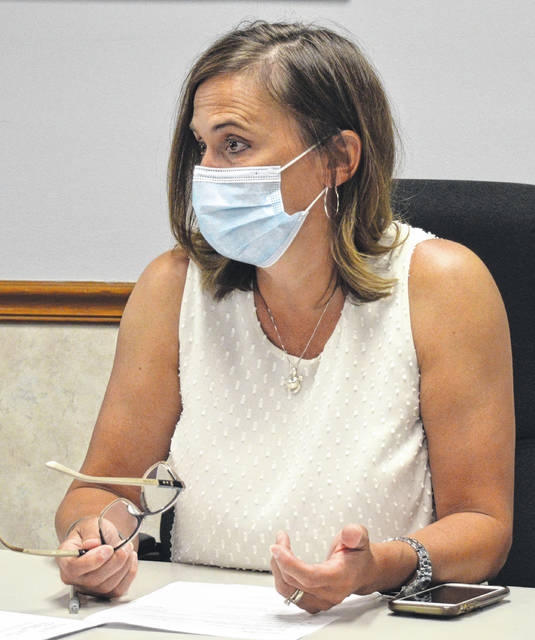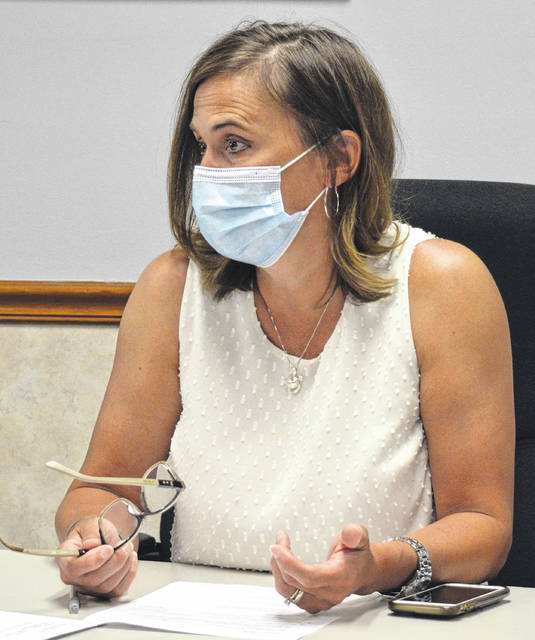

WILMINGTON — The Wilmington school board has endorsed Ohio House Bill (HB) 1 — also known as the Fair School Funding Plan.
In making the endorsement, board members passed a resolution stating Ohio’s current school funding system “lacks a rational basis for determining both the cost of educating students, and how the funding of education is shared between the state and local taxpayers.”
If HB 1 becomes law, Wilmington City Schools (WCS) officials estimate the district would annually get $491,000 more than now once the new formula is fully funded, something state officials say will take six years to phase in.
In addition to the prospect of more funds for K-12 education in the district, WCS Superintendent Mindy McCarty-Stewart said, “This [proposed] formula will also allow districts to plan out ahead. So your [school districts’] five-year forecast will become a more realistic five-year forecast.”
As an example, she said when the district presently receives Student Wellness and Success grant dollars, WCS administrators do not know whether they will continue to receive those funds down the road.
But if the new funding model is enacted by the State Legislature and governor, it will allow school districts to plan better and make long-term decisions.
The superintendent summarized, “The funding formula in House Bill 1 is an equitable approach for Ohio schools. It would benefit our district in the money we would receive. It would also provide stability to our district’s budget planning.”
Prior to the school board’s vote in support of HB 1, WCS Treasurer Kim DeWeese gave a presentation. For fiscal year 2020, WCS received about 40 percent of its revenue from the state, 43 percent locally, 5 percent from the federal level, and 12 percent from other sources.
WCS used to receive more money from the state level than from local sources, she said.
The HB 1 funding plan was developed by a work group comprised of superintendents and treasurers who began their work more than three years ago, said DeWeese.
Unlike the current state funding formula, said the treasurer, the new plan would use both property values and resident income to identify each community’s capacity to pay their fair share.
HB 1 also establishes a base cost of educating a “typical child” in Ohio, she said.
Another component of the proposal, said DeWeese, is they have considered the “whole student” — instruction, co-curriculars, professional development, social-emotional needs, career readiness counselors and technology. Those pieces are in the proposed model but have not been in previous models, according to her presentation.
As always, a big question is how is the state going to pay for the new funding formula?
Backers of the bill say Ohio’s current tax structure can accommodate a six-year phase-in, and no tax increase would be necessary, DeWeese said.
Last December, the Ohio House of Representatives passed a very similar bill by a vote of 84-8, but it did not get a vote in the State Senate. The Associated Press reported last December that some lawmakers in the Ohio Senate questioned the accuracy and feasibility of the eventual price tag — an estimated $2 billion annually.
The Ohio Supreme Court, in the 1997 case DeRolph v. State of Ohio, declared that Ohio’s school funding system was over-reliant on local property taxes, and as such, was inherently discriminatory to children based on where they reside because disparities exist between communities of affluence and impoverishment, according to the WCS resolution in support of HB 1.
Reach Gary Huffenberger at 937-556-5768.


